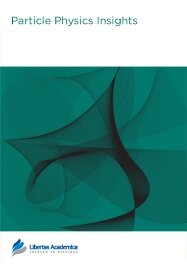

Publication Date: 29 Nov 2011
Type: Short Review
Journal: Particle Physics Insights
Citation: Particle Physics Insights 2011:4 33-38
doi: 10.4137/PPI.S8269

This paper demonstrates and analyzes the multiple and complicated ratio inter-relationships among pi, π; the fine structure constant, α; the frequency equivalents of an electron, ve; the Bohr radius, va0; the ionization energy of hydrogen or the Rydberg constant, R; vR; and the classical electron radius, vre. These relationships are partially known, but many are not yet fully recognized. This paper presents all of them as a unified system, demonstrating an unexpected inter-relationship among the quantum properties of hydrogen that can be used to calculate and understand relationships between fundamental constants. These ratios are of logical origin, but are quite complicated and not intuitive. These relationships stem from geometry and the nature of the components of hydrogen: for example, they relate a transition of a mass/energy to a circumference distance. a is related to six different frequency equivalent ratios: the product of 4π and vR, divided by va0; the square root of 2 times vR divided by ve; va0 divided by the product of 2π times ve; the product of 2π and ve divided by vre; the square root of the ratio of va0 divided by vre; and the cube root of 4π times vR divided by vre. π is also related to multiple ratios of α and the hydrogen frequency equivalents from the previous relationships. 8π2 is equal to the ratio of va0 squared divided by the product of vR and ve. The combination products of α, 2, and 2π are the scaling ratios of the transformations between a mass/energy and a distance for all of the four hydrogen constants. If any three of the six constants are known, then the other three can be derived, demonstrating the intricate relationship of these constants. These relationships also must hold for effective α (running α) as well. In part, they explain its origin and why α must change in certain settings. Therefore these relationships extend to high energy physics, as well as adding new insights to effective α.
PDF (514.47 KB PDF FORMAT)
RIS citation (ENDNOTE, REFERENCE MANAGER, PROCITE, REFWORKS)
BibTex citation (BIBDESK, LATEX)

Working with the Editor at the Journal of Medical Education and Curricular Development, and the publishing staff at Libertas Academica was an excellent experience. From submission to revision, the editorial process was smooth and fair. I had such a good experience that I will consider journals of Libertas Academica at the top of my list the next time I want to submit a manuscript.
Facebook Google+ Twitter
Pinterest Tumblr YouTube